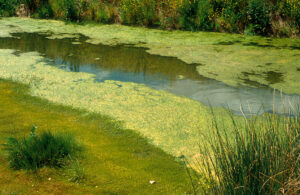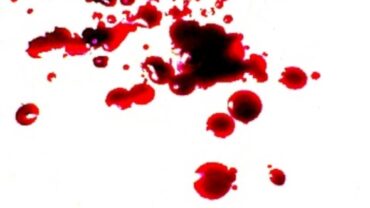Algae
algae (singular, alga) A large and diverse group of photosynthetic organisms formerly called simple plants. But now members of their own phyla, the Protoctista, that also includes the slime molds and protozoa. Algae, some 17,000 species or more, live in aquatic and moist inland regions. They do not have roots, stems, or leaves and have no vascular water-conducting systems. Algea reproduce by spores, and in some species the spores are mobile with the use of flagella. They range from simple single cells (e.g., Euglena) to “plants” many feet long(e.g., kelps such as Macrocytis). And make up marine seaweed and much of the plankton that provide food for other species.

Blue green algae in irrigation drain at Griffith, NSW. 1989.
Unusual growth outbursts result in “algal blooms” or “red tides” and occur when there is an increase in nutrient levels in a body of water.
Cyanophyta, or blue-green algae, are now classified as cyanobacteria. The phylum Cyanophyta also includes chloroxybacteria. Cyanophytes contain phyco- cyanin, a photosynthetic pigment giving them a blue color. The red pigment phycoerythrin is also almost always present. They are diverse and can live as single cells or as colonies or large filaments. Some are nitrogen fixers in soil and others, like lichens, display symbiosis with a fungus, usually with a member of Ascomycota. The fungus provides the host plant for the algae cells that are distributed throughout and provide food to the fungus while the fungus protects the algae cells.




